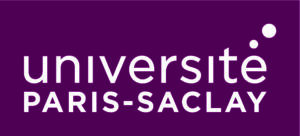The IPVF Newsletter of June 2021 is out! This month, the editorial is proposed by Stéphane Collin. It is reproduced below.
News from the IPVF III-V/c-Si tandem solar cell program.
In the past years, solar photovoltaics (PV) became one of the cheapest sources of energy. Yet, expectations from both the society and the PV industry are still high, and most of the research efforts are now dedicated to pushing up the efficiency of solar cells. Silicon-based tandem devices are the most-regarded solutions for next-gener- ation photovoltaics, and it is our mission to explore the different options for the top cell among perovskite, III-V or polycrystalline thin-films. III-V photovoltaics has been at the forefront of high-efficiency solar cells and have much to offer in this context.
The role of III-V technologies is multifaceted. III-V solar cells are currently limited to high-value applications such as spatial or concentrated photovoltaics. The goal of the IPVF program on III-V is twofold. The first one is focused on the development of novel and low-cost architectures and processes, targeting single-junction and tandem devices with state-of-the-art efficiencies. The second is to explore new processes for low cost III-V in a high risk-high gain strategy. We are investigating low-temperature and high-vacuum deposition, direct growth of III-V nanostructures on silicon, facile lift-off for substrate reuse, low-cost bonding, etc. Ideally located in the Saclay area with a long history of research and industrial activities on III-V semiconductors, the IPVF community may provide new routes to expand the use of III-V to vehicle-integrated PV, drones and emerging aerospace markets, autonomous electronics or even larger scale applications.
Beyond the quest for low-cost and high-efficiency III-V/ Si solar cells, III-V technologies have also contributed to advances in other fields of photovoltaics for decades in many different ways. By providing high-quality and well-controlled materials and devices, they have helped the development of novel characterization techniques and proof-of-concept devices and modules. Moreover, they have inspired the whole community with new heterostructures and light management architectures, to name a few. At IPVF, the different research programs are working side by side in a collaborative effort to push the efficiencies up and the costs down, and it is our strength to create bridges between the different technologies in order to accelerate the achievement of high-efficiency and low-cost tandem solar cells.



